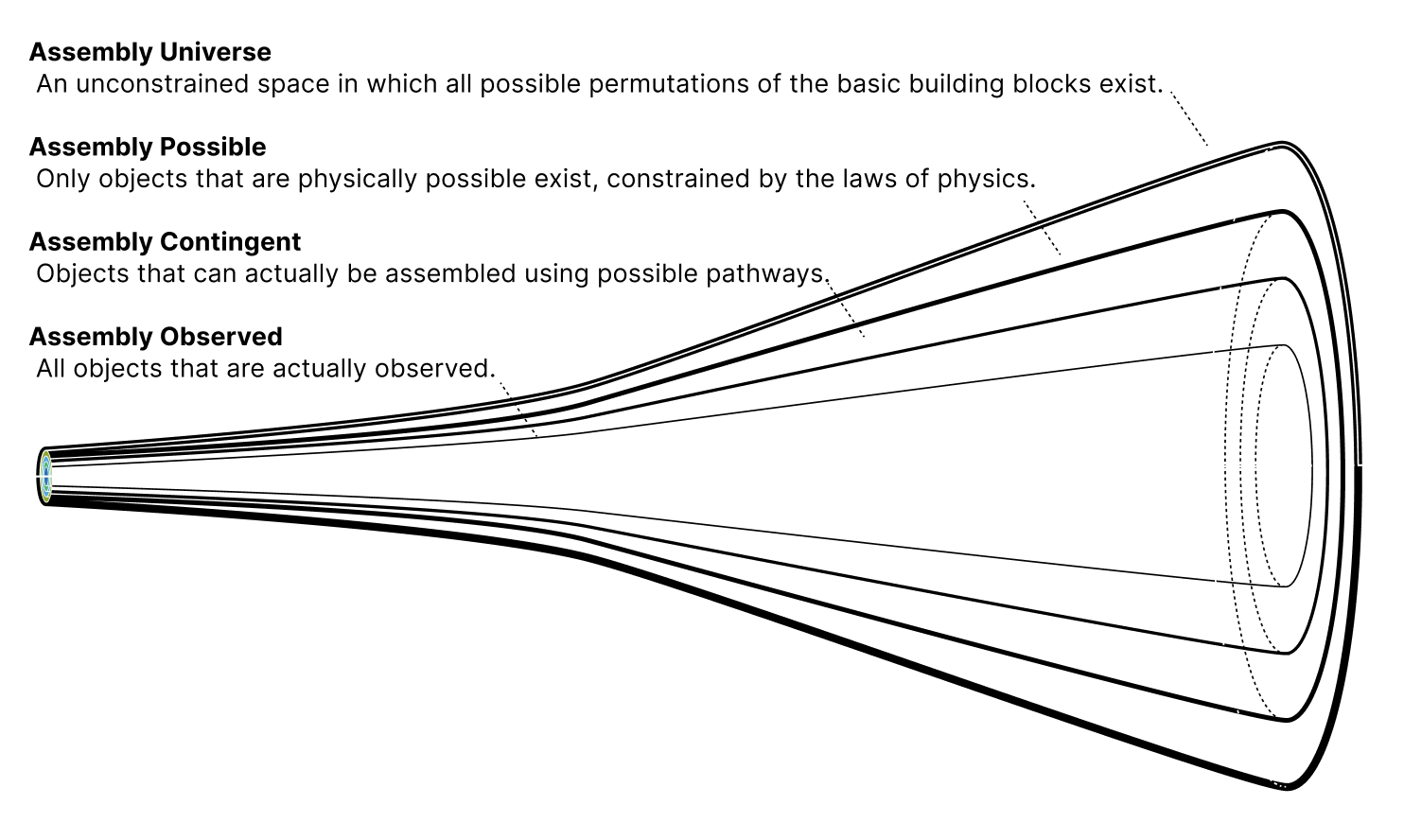Core Concepts
What is Assembly Theory?
Assembly theory posits that the complexity of an object is measured by the minimum number of steps required to build it from basic building blocks.
It was developed by Lee Cronin (University of Glasgow) and Sara Walker (Arizona State University), and its first major publications appeared around 2017-2021.

The Assembly Index
At the heart of Assembly Theory is the Assembly Index (AI) - a quantitative measure of complexity.
It calculates the minimum number of steps required to construct an object from its basic components, providing a universal metric for comparing complexity across different systems.

Assembly Space
By mapping the "assembly space" of possible configurations, we can predict which complex structures are likely to emerge, anticipate future evolutionary or technological developments, and recognize the fundamental constraints that shape complexity in our universe.

What is the Assembly Universe?

Revolutionary potential
Assembly Theory provides a revolutionary framework for understanding how complexity emerges in our universe. From atoms to organisms to technologies, it reveals the universal principles that govern the formation of complex structures across all domains of existence.

Key Insights
🎯 Selection Pressure
The dramatic reduction from universe → possible → contingent → observed reveals the power of physical laws, historical contingency, and selection processes in shaping reality.
💡 Innovation Boundaries
New objects can only emerge from the intersection of what's physically possible and historically accessible - true novelty must still follow assembly pathways.
🔍 Search Process
Evolution, intelligence, and technology represent different mechanisms for exploring the transition from contingent to observed assembly space.
📊 Constraint Hierarchy
Each level adds constraints:
- Universe: pure mathematics,
- Possible: Physical laws,
- Contingent: Historical pathways,
- Observed: Selection pressures + replication success.
Key Principles
🏗️ Hierarchical Construction
Complex objects are built from simpler sub-units. Sub-units can be reused across different assemblies. Creates a nested hierarchy of complexity.
🛤️ Path Dependency
The history of assembly matters. Objects carry information about their construction process. Evolution and selection can optimize assembly pathways.
🌟 Combinatorial Explosion
The number of possible objects grows rapidly with assembly steps. Selection mechanisms are needed to navigate vast assembly spaces. Living systems represent highly selected regions of assembly space.
Key Applications
🔮 Predict Emergence
Anticipate which complex structures are likely to emerge in biological and technological systems.
🔄 Identify Patterns
Recognize convergent evolution patterns across different domains and scales.
🌉 Bridge Disciplines
Connect insights from physics, biology, and technology through a unified framework.
Interactive Visualizations
Explorer Experimental
Advanced exploration tool for navigating the assembly theory knowledge base with enhanced search and filtering.
Launch ExplorerProfound Implications Active
Explore the deep philosophical and scientific implications of Assembly Theory through interactive visualizations.
Explore ImplicationsImplications for Ethereum
Ethereum Composability Explorer Experimental
Advanced exploration tool for navigating the assembly theory knowledge base of Etheruem with enhanced search and filtering.
Launch ExplorerView Ethereum Simulator Active
Ethereum is an open source composable financial system, how can we leverage asssembly theory to understand how ethereum is evolving and gain alpha on questions like "Which primitives should we combine?" and "where is the space going?"
Explore Ethereum-centric Simualtor